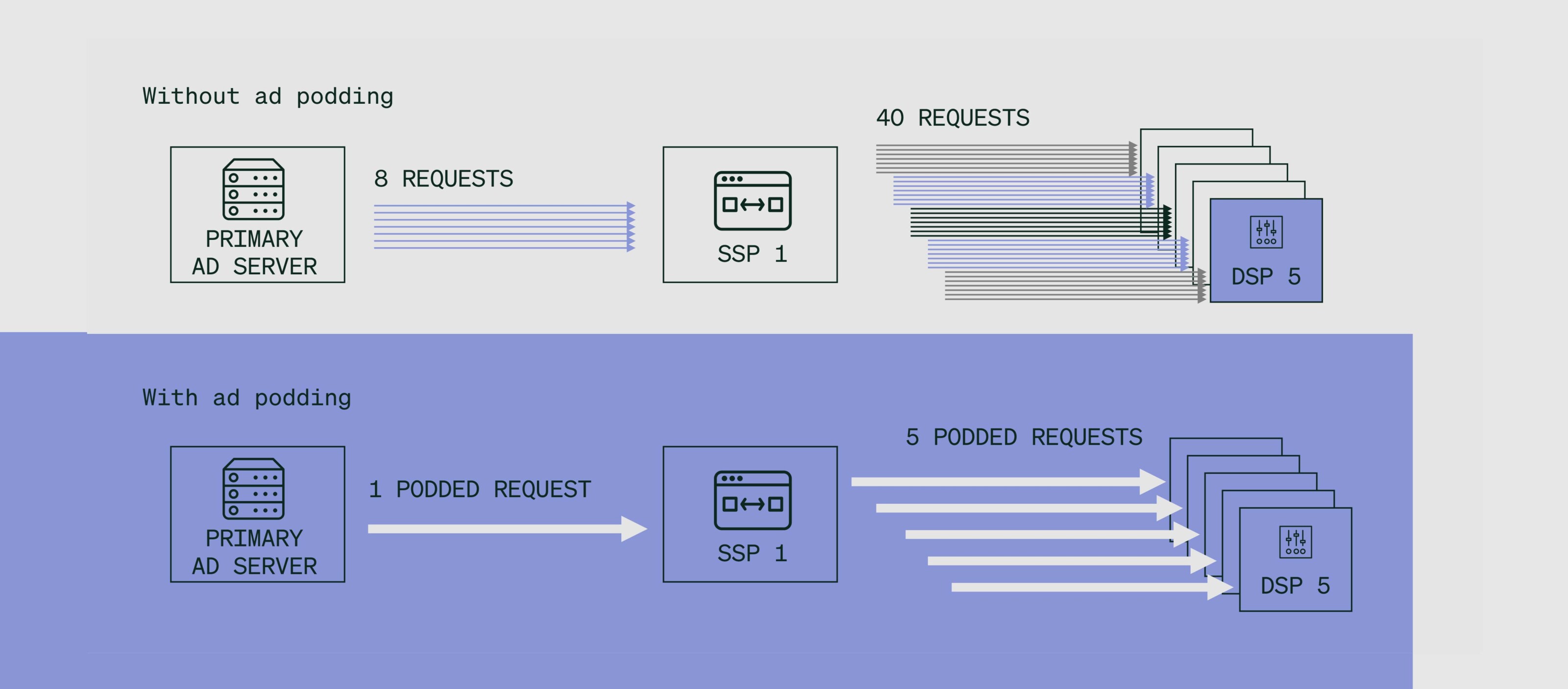Unlocking smarter, more scalable transactions in streaming TV
Overview
In streaming TV, ads are typically delivered in pods, a sequence of multiple ads served together, similar to traditional commercial breaks. While this format is familiar to viewers, replicating it in programmatic environments has proven technically challenging.
In most of today’s programmatic streaming transactions, these ad pods are flattened into multiple individual bid opportunities, with each slot treated as a standalone impression. For example, a 90-second ad break may generate separate requests for 15- or 30-second slots, with no indication that they belong to the same pod.
This approach remains widespread, but it creates real-time challenges for DSPs and buyers:
- Increased queries per second (QPS): Flattened requests flood the supply chain with multiple bid requests, placing unnecessary strain on DSP infrastructure.
- Creative duplication: Without visibility into the full pod, DSPs may unintentionally submit the same creative for multiple slots, leading to publisher-side rejections.
- Limited context: Without pod-level data like duration, buyers have no way to make informed decisions, reducing efficiency and media value.
These inefficiencies constrain the scale and performance of programmatic streaming campaigns today and highlight the urgent need for a more intelligent and scalable solution.
Solution
Anticipating the future needs of streaming buyers, StackAdapt proactively partnered with Index Exchange to implement ad podding, a modern, standards-based approach to transacting video ad breaks in programmatic environments. As a lead contributor to the OpenRTB 2.6 specification, Index helped define how podded transactions can be executed across the ecosystem.

Rather than issuing multiple isolated impressions, ad podding enables a more intelligent, structured request model that StackAdapt quickly embraced to optimize decisioning and scale. This enabled StackAdapt to:
- Consolidate QPS by receiving multiple opportunities in one streamlined transaction, dramatically reducing infrastructure strain and improving responsiveness during peak demand.
- Enhance bid intelligence with full pod-level context, enabling more precise bidding strategies, better creative alignment, and enforcement of competitive separation.
- Eliminate creative duplication through dynamic logic and advanced deduplication, enhancing campaign quality and reducing friction for streaming publishers.
Results
StackAdapt saw strong gains across key metrics within Index Exchange inventory after implementing ad podding:
- 25% Increase in win rate at peak, driven by more strategic, pod-aware bidding
- 39% Average reduction in creative duplication errors, improving ad quality and delivery accuracy
- 71% Average QPS savings, enabling StackAdapt to support more bidding opportunities for its brand and agency partners
These gains have allowed StackAdapt to scale smarter, support higher campaign throughput, and ensure buyers consistently access premium streaming inventory with confidence.
“At StackAdapt, we’ve always believed that solving for streaming TV efficiency requires more than adapting to the status quo—it demands helping define what the future should look like. That’s why we partnered early with Index Exchange to implement pod bidding.”
Greg Joseph, VP of Inventory Development
StackAdapt
“By moving away from flattened request structures and embracing pod-level transparency, we’ve not only reduced infrastructure strain and improved bid quality, but also set the stage for more scalable, intelligent buying—especially in high-value moments like live sports,” shared Greg Joseph, VP of inventory development at StackAdapt. “This is a win for our teams, for our partners, and for the broader programmatic ecosystem.”
Contact us to learn how our ad podding solution can improve campaign efficiency and maximize performance at scale.







